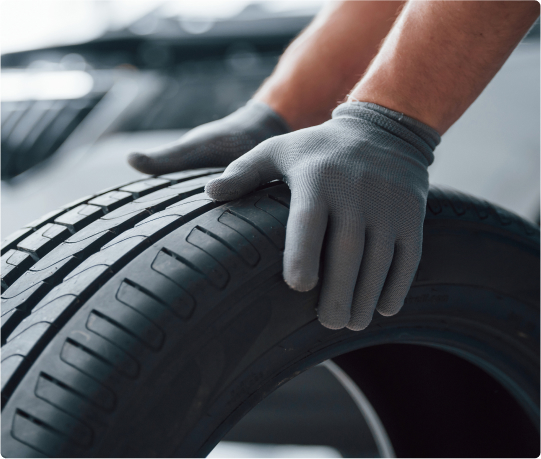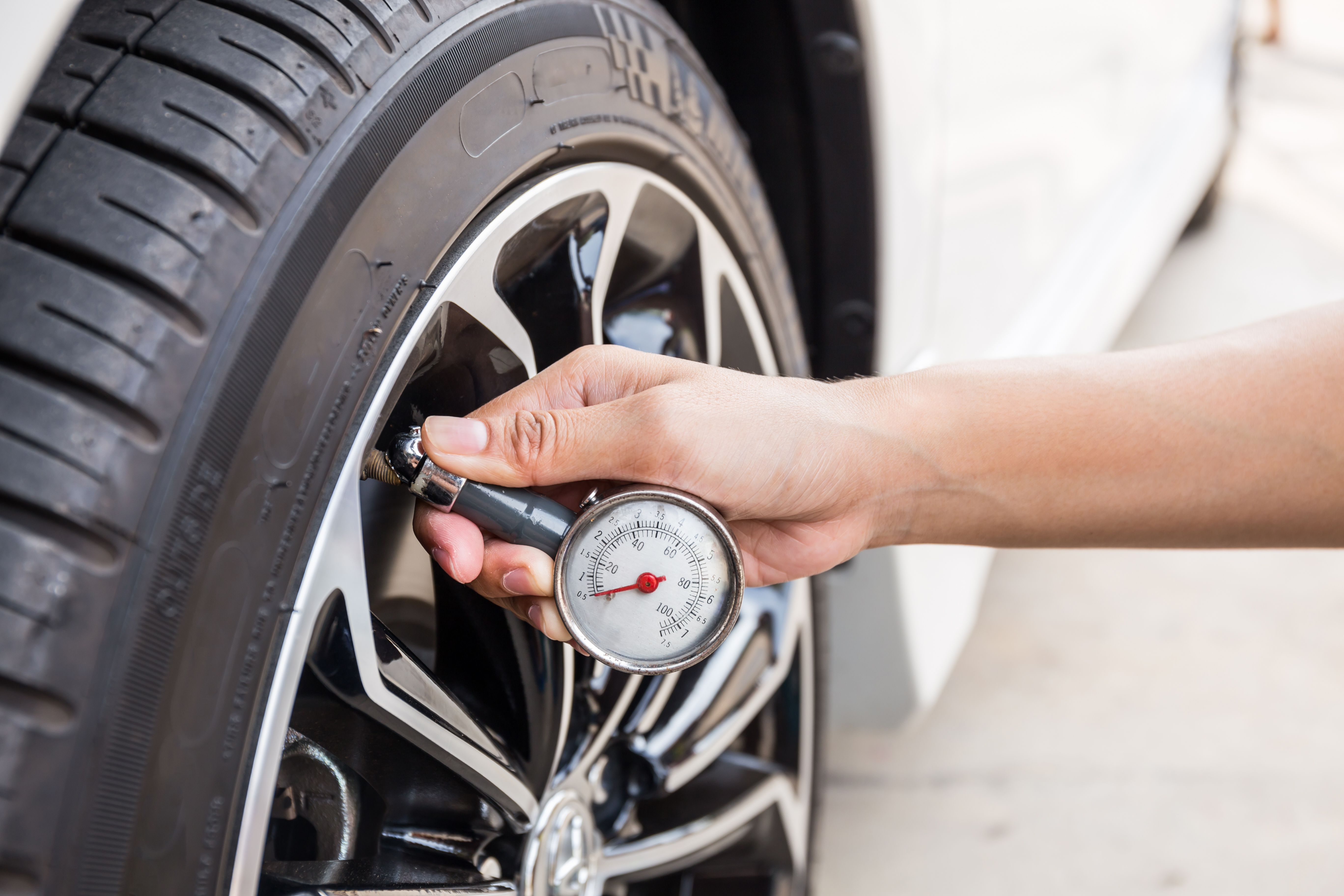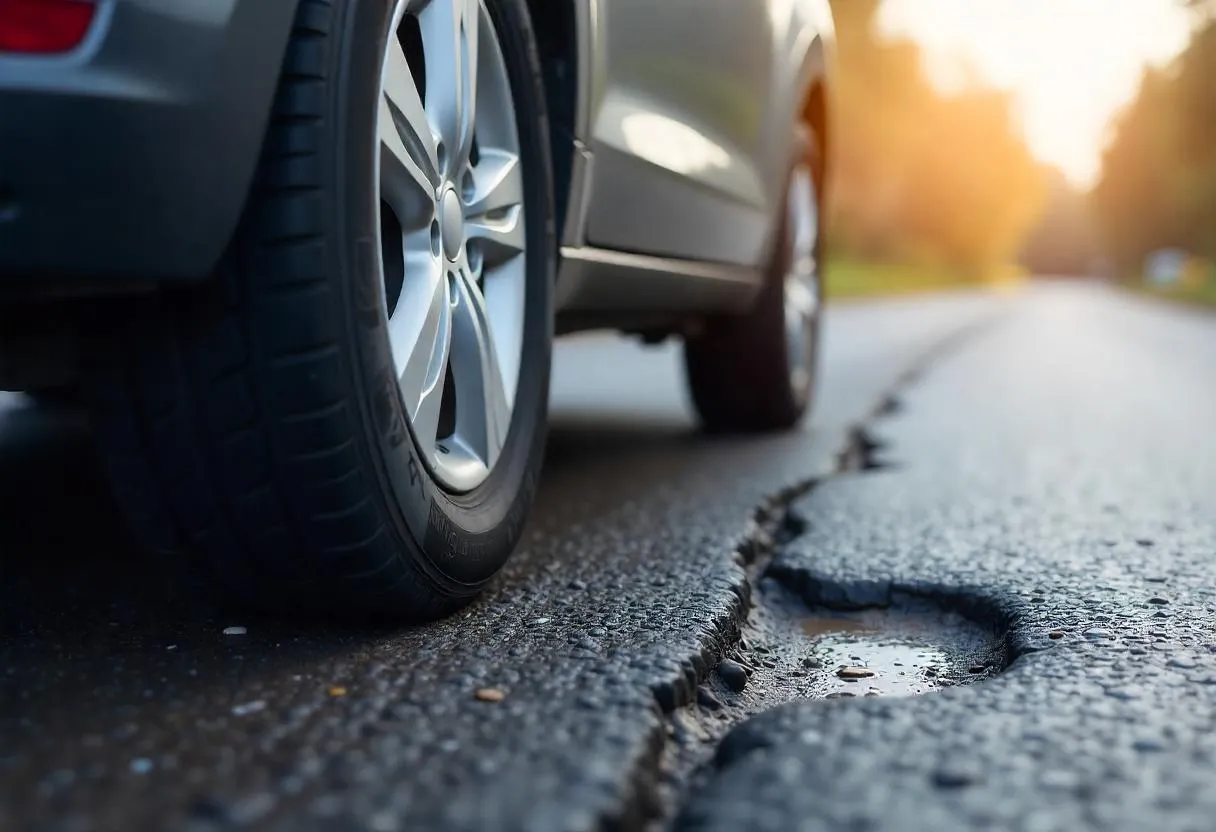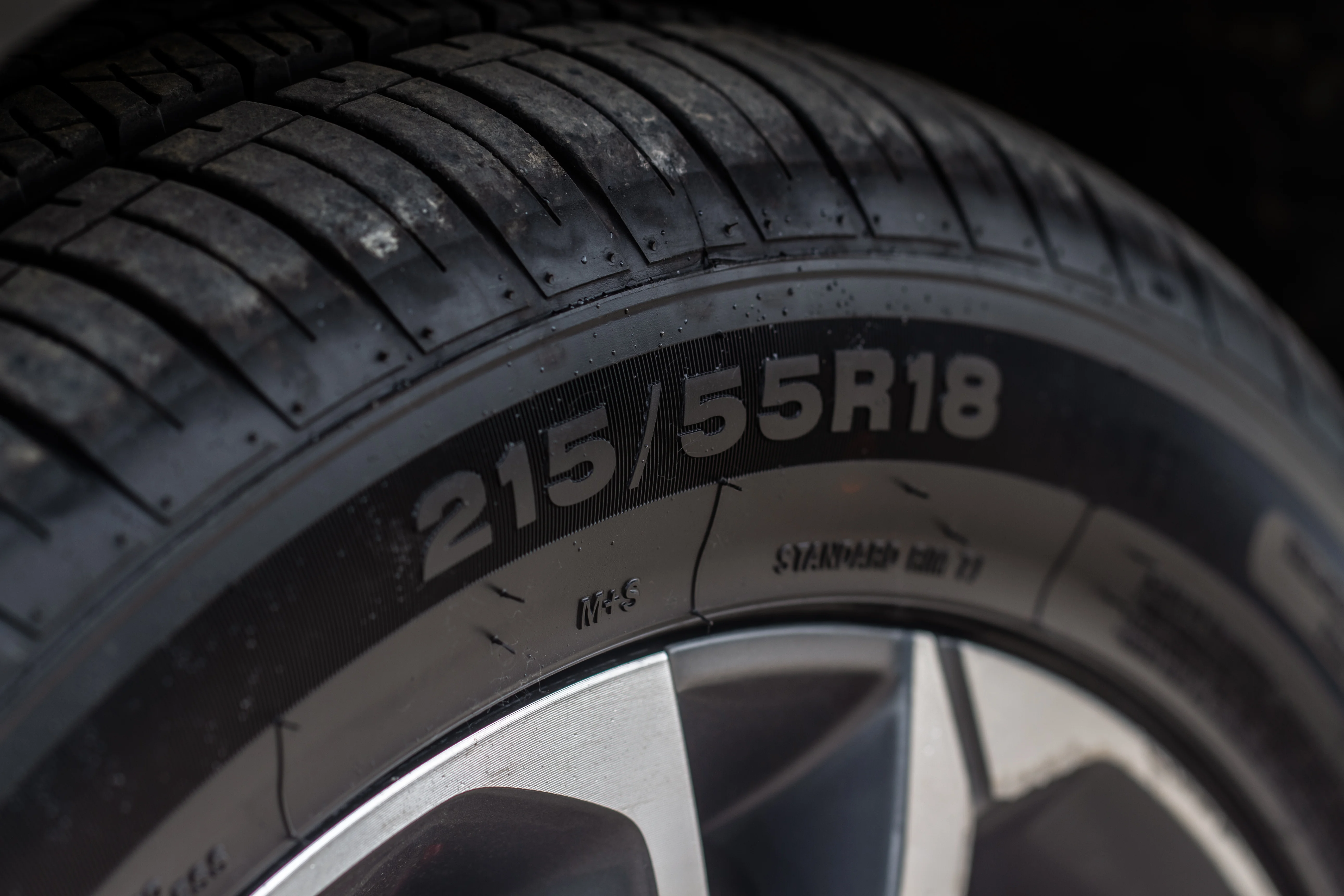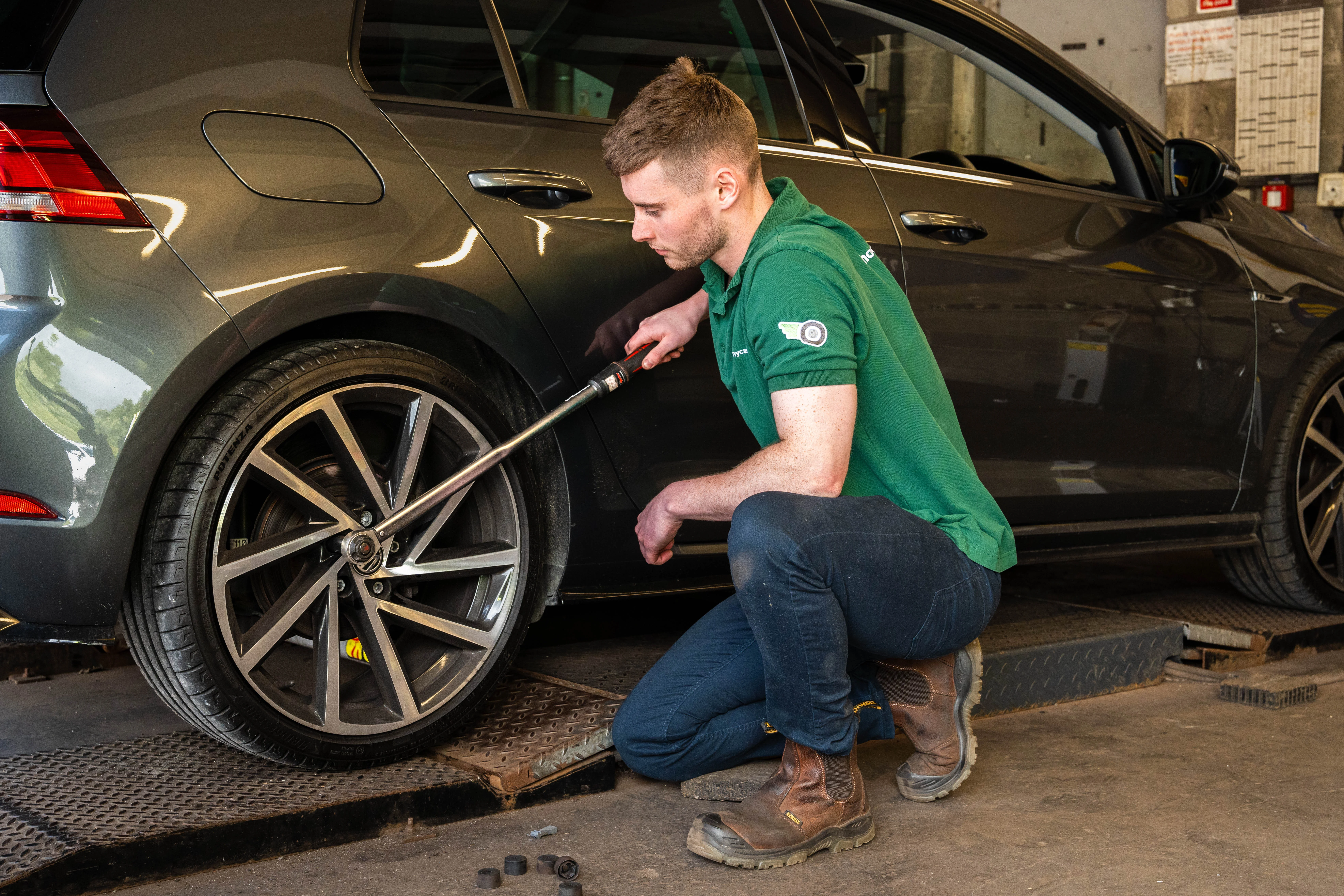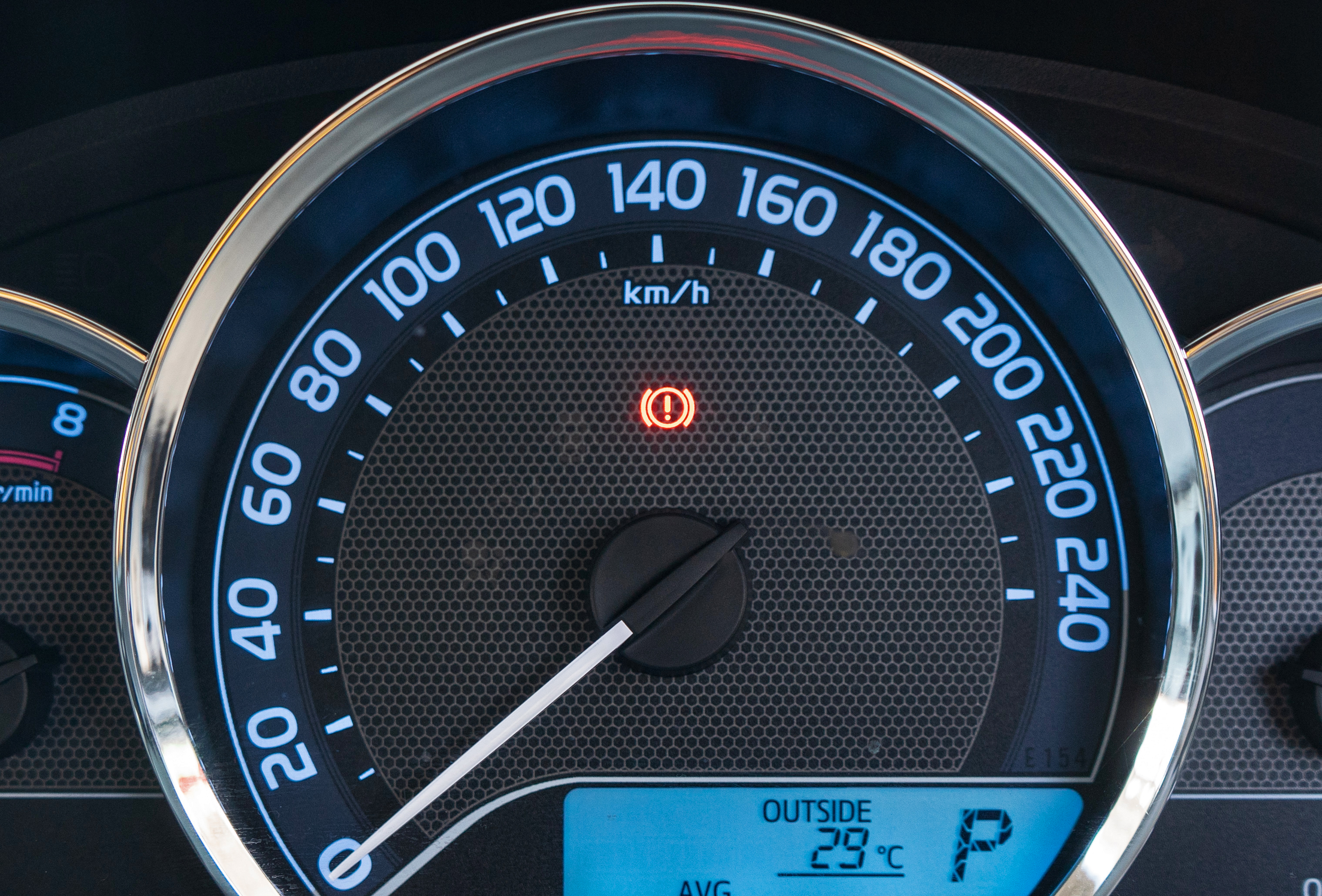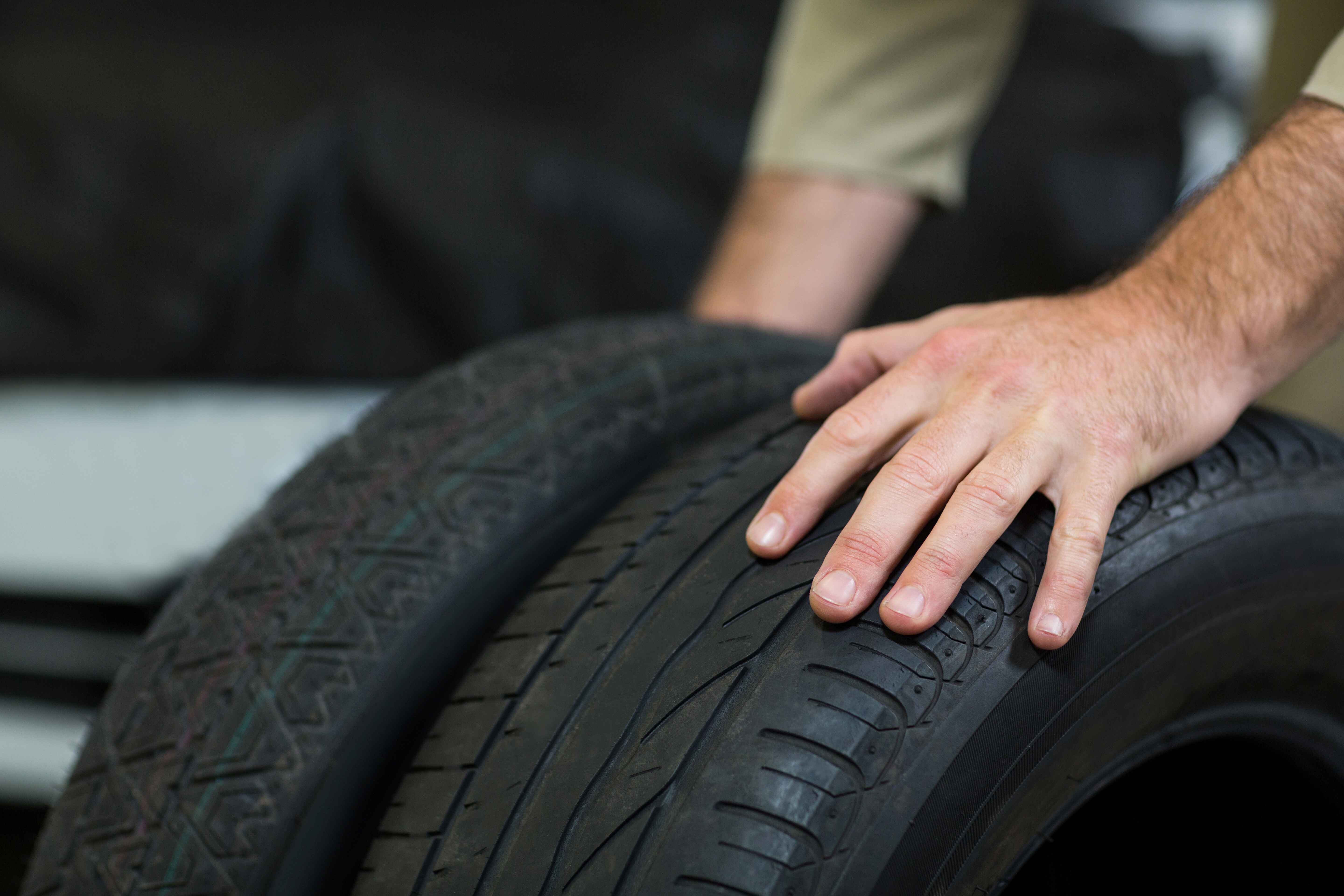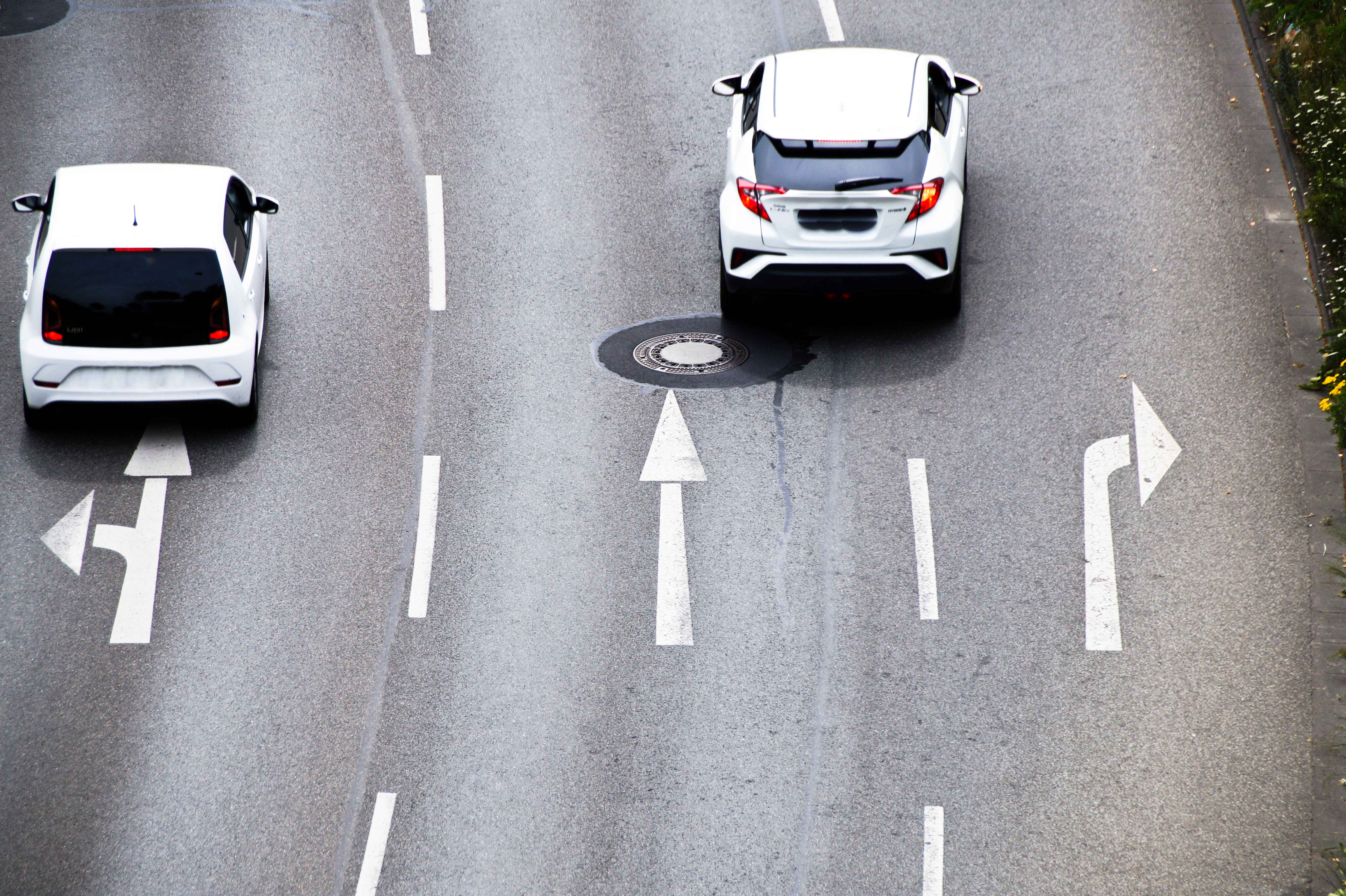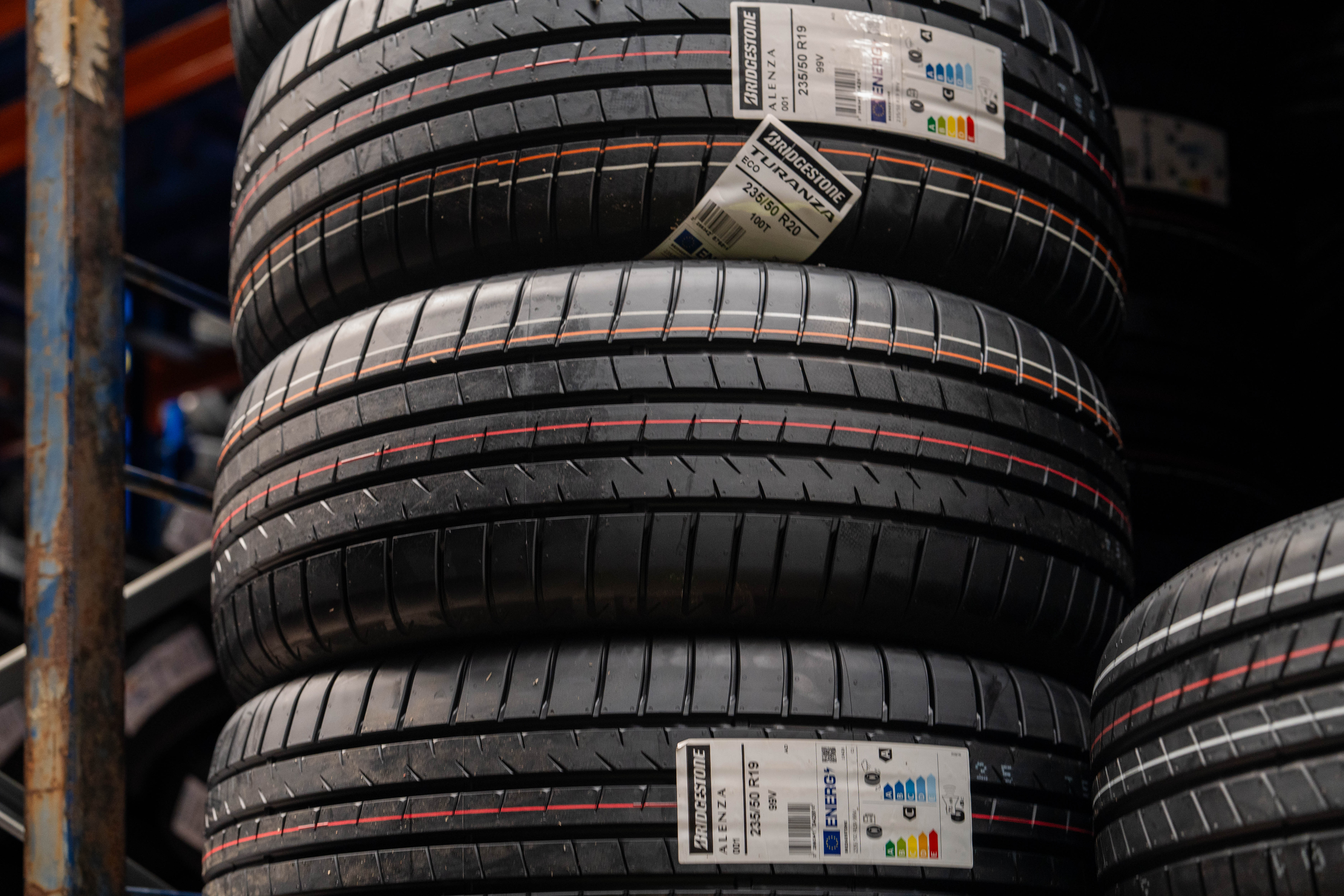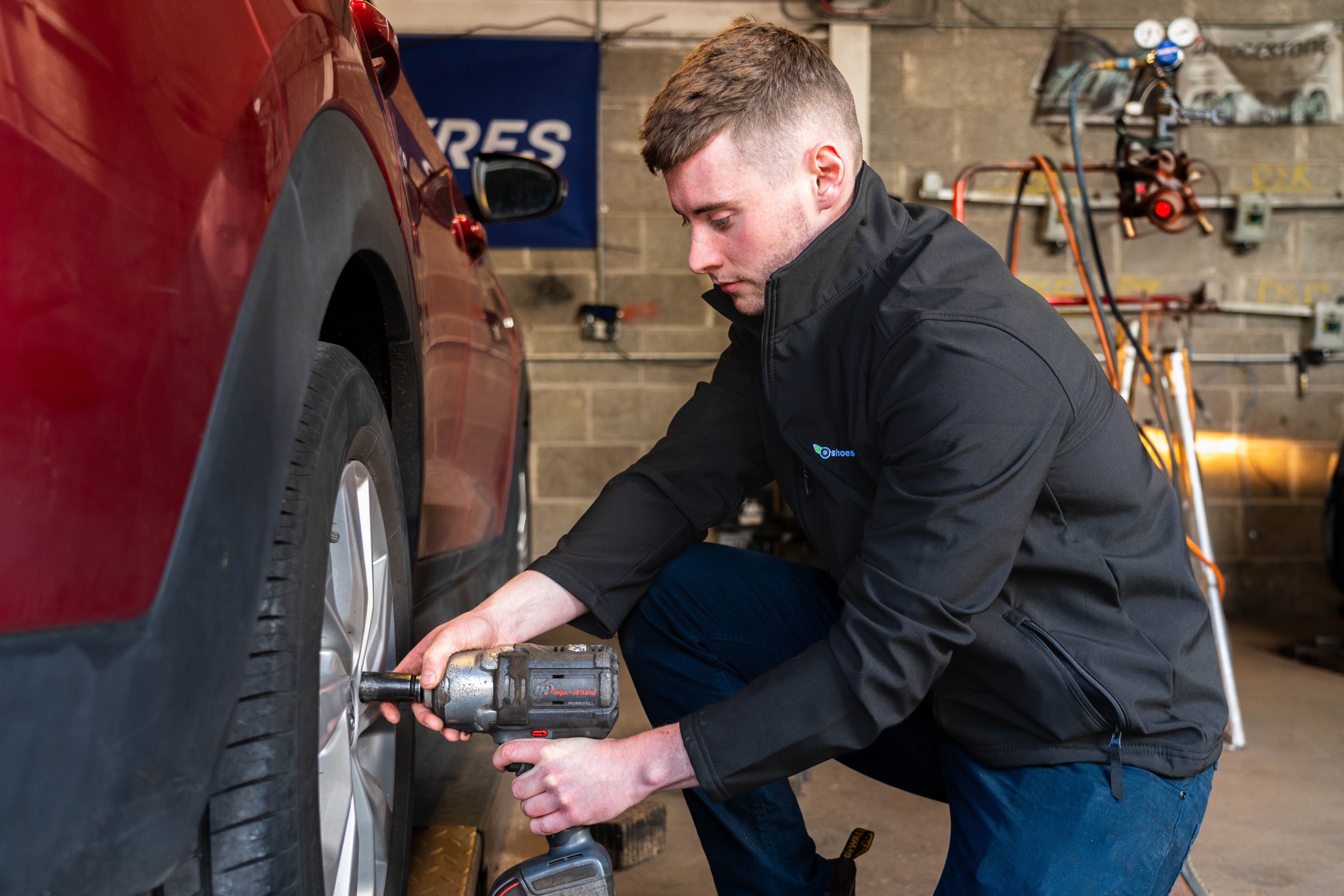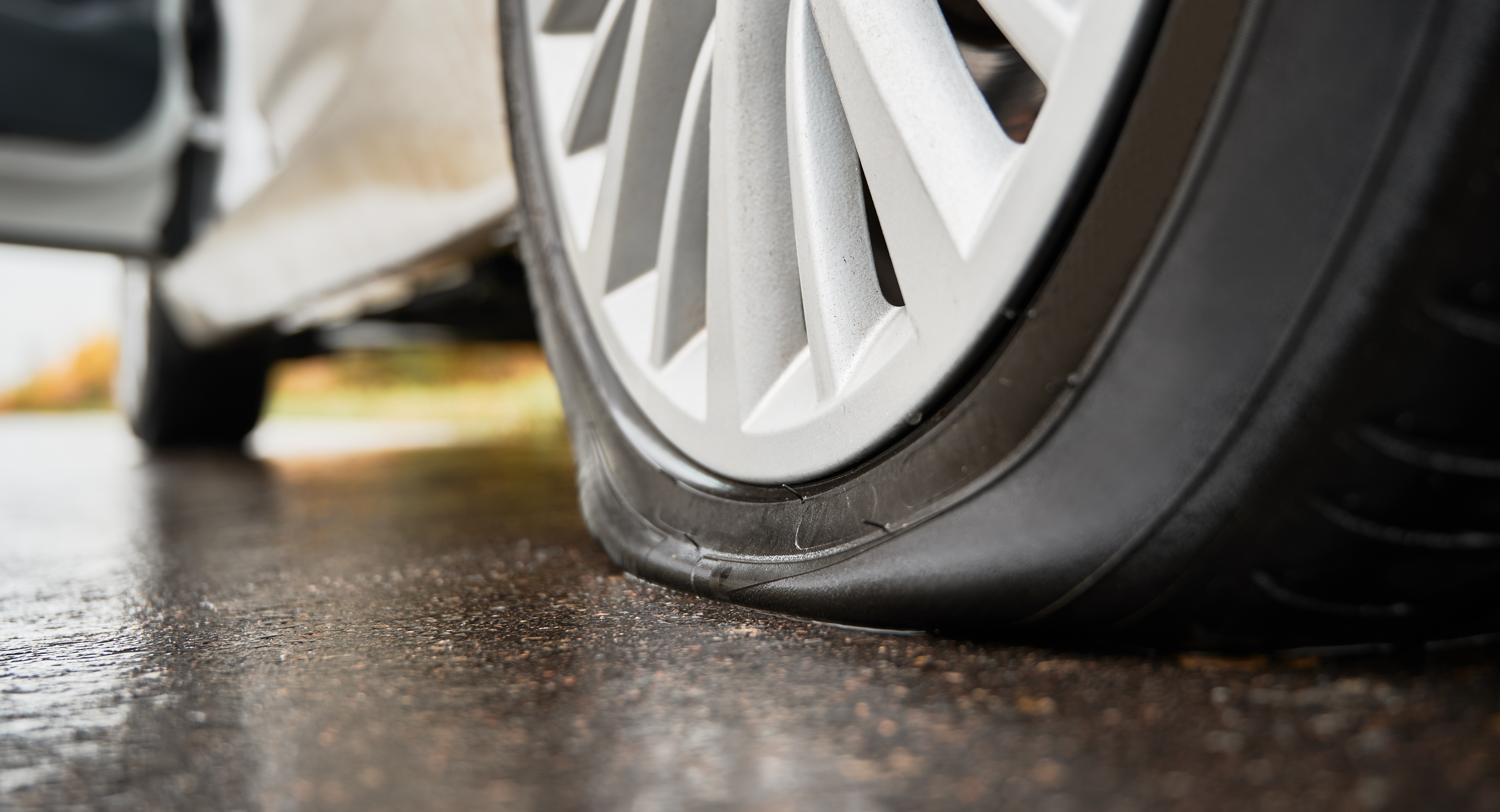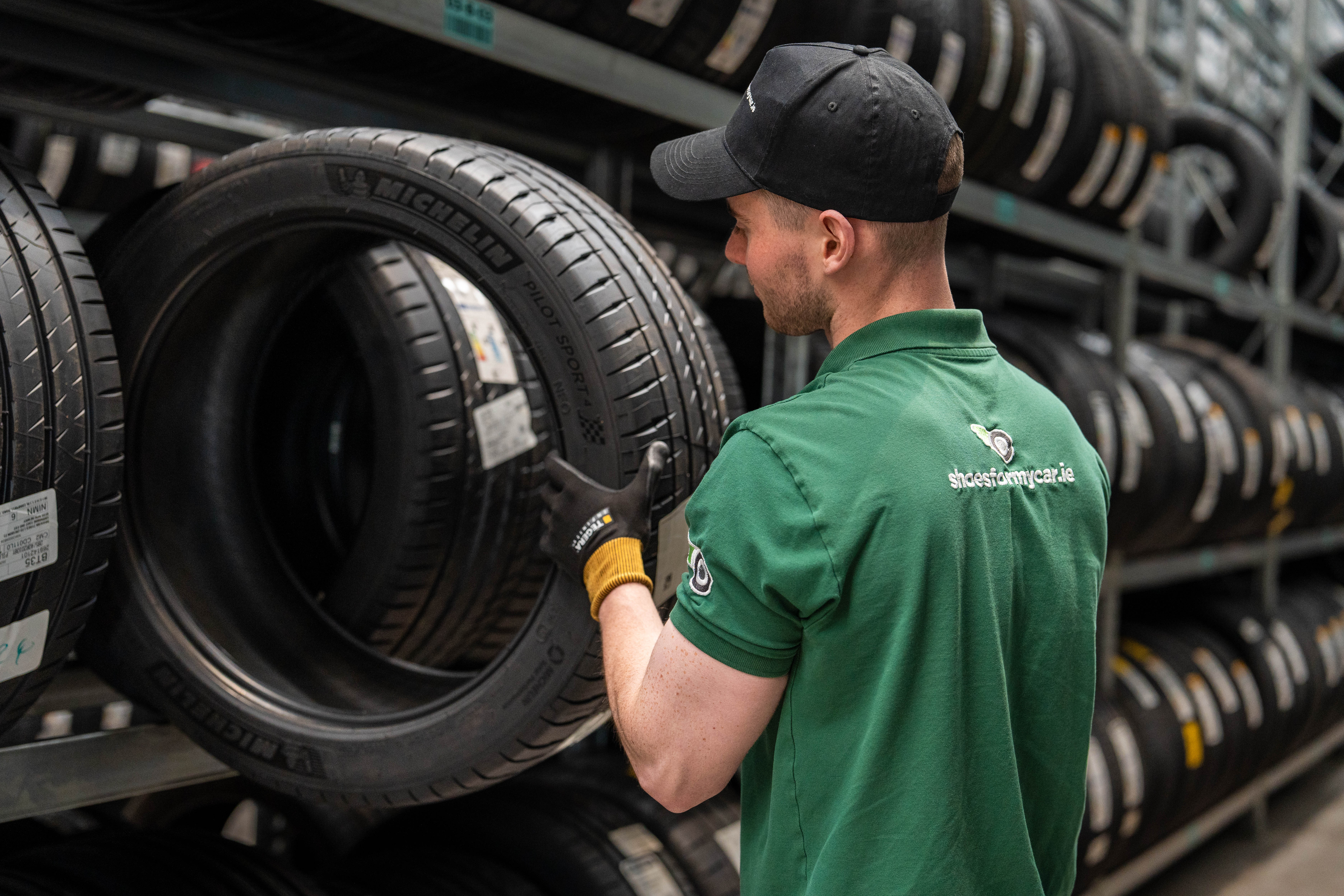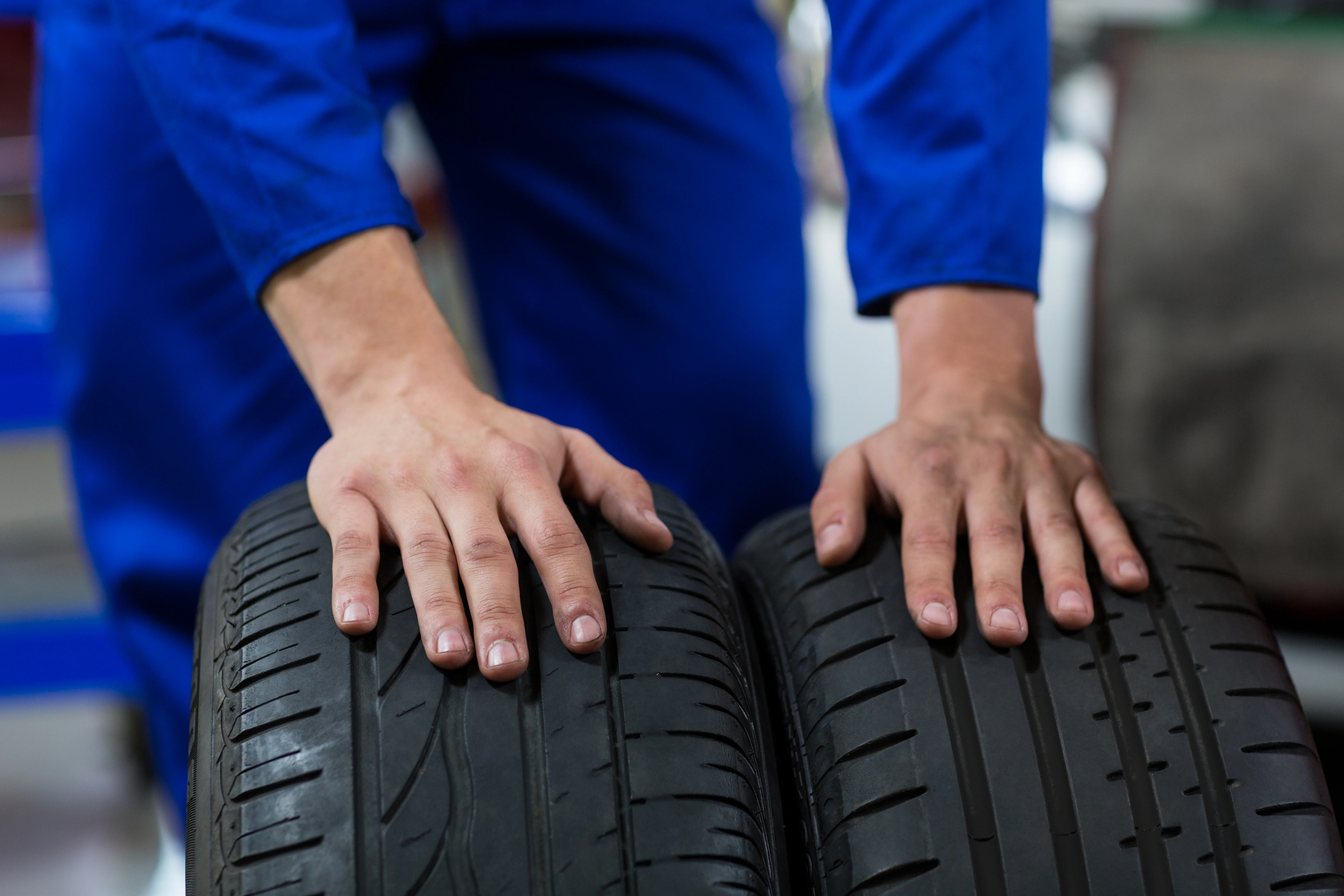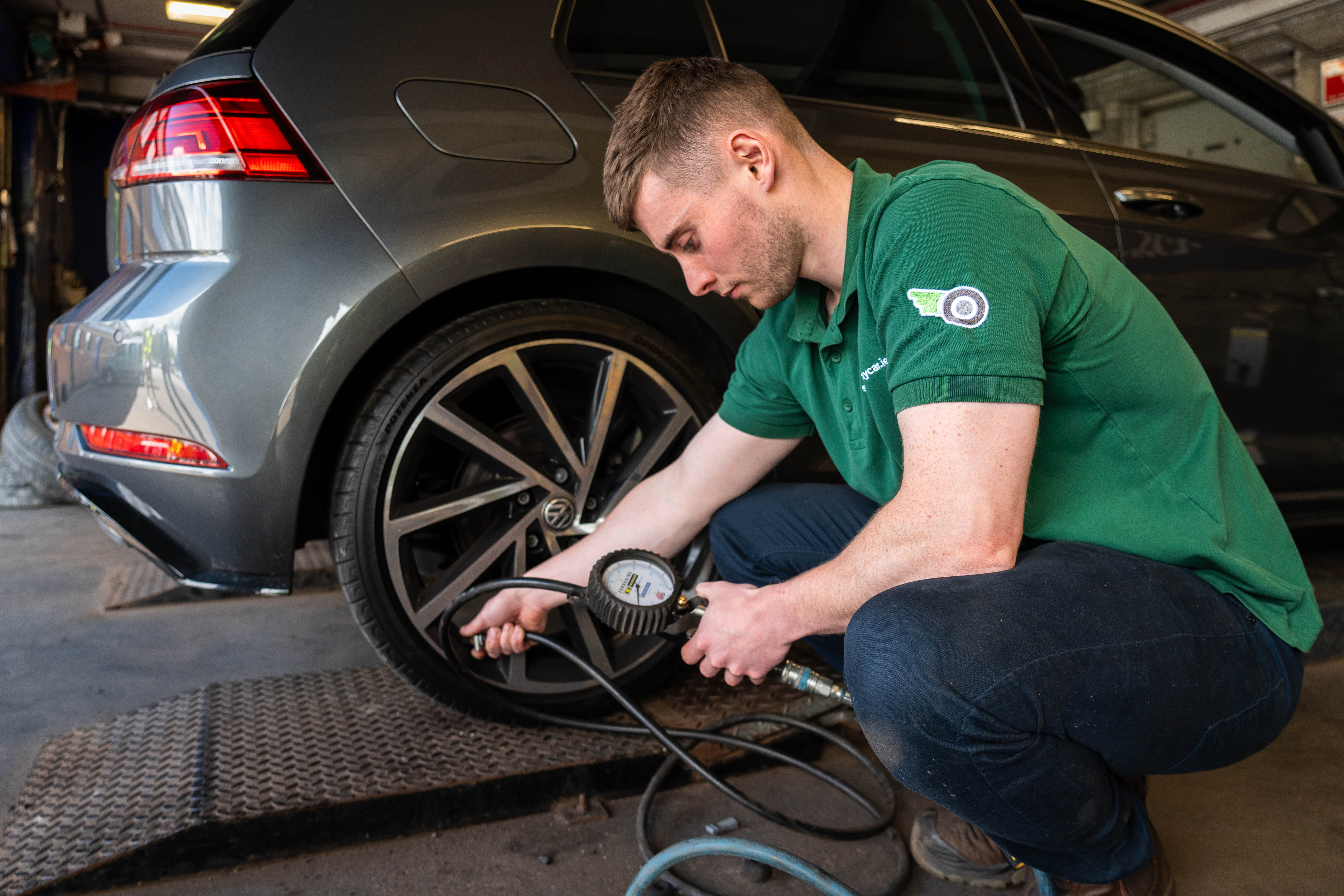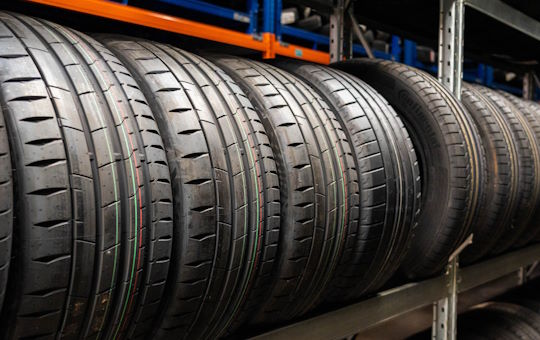Runflat tyres have gained popularity due to their safety and convenience. Designed to keep you driving after a puncture or loss of pressure, these tyres eliminate the need for roadside tyre changes. In this post, we’ll explain what runflat tyres are, how they function, and the pros and cons of using them.
What Are Runflat Tyres?
Runflat tyres are specifically designed to keep you on the road for up to 50 miles after a puncture or loss of pressure, eliminating the immediate need for a tyre change. Unlike standard tyres, runflats feature reinforced sidewalls that can support the weight of your vehicle even when the tyre is fully deflated. This added strength allows you to maintain control and continue driving safely to a nearby service station or safer location for a tyre replacement.
There are two main types of runflat tyres, each with a different approach to handling the vehicle’s weight in the event of a puncture:
- Self-Supporting Runflat Tyres: These tyres are equipped with thicker, more rigid sidewalls that can independently support the weight of the vehicle when air pressure is lost. This design enables the tyre to maintain its shape and stability, allowing you to drive without significant changes to handling or performance for a short distance.
- Auxiliary-Supported Runflat Tyres: These tyres work in conjunction with a support ring or insert built within the wheel. When the tyre loses pressure, this internal support takes on the vehicle's weight, preventing the tyre from collapsing and helping maintain ride quality until repairs can be made.
How Do Runflat Tyres Work?
Runflat tyres are engineered to allow continued driving after a puncture by using a reinforced structure that keeps the tyre from collapsing when it loses air pressure. The key to their functionality lies in the specially designed reinforced sidewalls. Unlike regular tyres, these sidewalls are built with extra layers of rubber and stronger materials, which remain rigid even after a significant loss of pressure. This rigidity prevents the tyre from sagging and keeps the vehicle stable, allowing you to drive safely for a short distance.
When a puncture occurs, the runflat tyre allows you to keep driving at a reduced speed—typically up to 50mph. This reduced speed minimises the strain on the tyre, ensuring it can carry the vehicle's weight and maintain some level of control and performance. You can usually drive for around 50 miles before needing to stop, giving you enough time to reach a safe location or a nearby repair shop for a tyre replacement or repair.
Factors Affecting Runflat Tyre Performance After a Puncture
Several factors can influence how far you can travel and how well your runflat tyres perform after a puncture:
- Type of Runflat Tyre: The two main types, self-supporting and auxiliary-supported runflat tyres, affect how the vehicle handles after a puncture. Self-supporting runflat tyres rely solely on the strength of the sidewalls, while auxiliary-supported tyres use a support ring within the wheel to help bear the vehicle's weight.
- Vehicle Weight: Heavier vehicles put more pressure on tyres, which may reduce the distance you can travel on a flat runflat tyre. Lighter vehicles might be able to drive slightly further on deflated runflats.
- Driving Speed: While you can keep driving after a puncture, driving at higher speeds can accelerate the wear and tear on the tyre. Keeping your speed under 50mph helps maximise the tyre’s lifespan and maintain control over your vehicle.
- Road Conditions: Driving on smooth roads with minimal debris and potholes helps preserve the tyre's functionality after a puncture, whereas rough or uneven surfaces may reduce the distance you can travel.
It's important to remember that runflat tyres are not a permanent solution. They are designed to give you time to reach safety, not to replace the need for a tyre repair or replacement. They provide extra peace of mind, especially in situations where changing a tyre on the spot would be dangerous, such as on busy highways or in remote areas.
Learn more about common causes of tyre damage.
Advantages of Runflat Tyres
It's important to remember that runflat tyres are not a permanent solution. They are designed to give you time to reach safety, not to replace the need for a tyre repair or replacement. They provide extra peace of mind, especially in situations where changing a tyre on the spot would be dangerous, such as on busy highways or in remote areas.
Enhanced Safety
One of the key advantages of runflat tyres is the added safety they offer in case of a puncture. Traditional tyres can lead to dangerous blowouts, causing a loss of control, especially at high speeds. Runflat tyres, however, are designed to support the vehicle's weight after a puncture, allowing you to continue driving for a short distance—usually up to 50 miles at a reduced speed (about 50 mph).
This gives you ample time to reach a safe location for repair or replacement. You avoid the need for immediate stops on busy motorways or in unsafe locations, significantly reducing the risk of accidents due to abrupt tyre changes.
Increased Convenience
Runflat tyres remove the hassle of carrying and changing a spare tyre. For many drivers, the thought of a roadside tyre change, especially in unfavourable weather or remote areas, is stressful and inconvenient. With runflats, there’s no need to pull over immediately.
You can drive to a service station or your destination without having to stop. This added convenience is particularly valuable during long road trips, on highways, or in areas where assistance may not be readily available. Additionally, without the need for a spare tyre, vehicles have more available boot space, which can be useful for transporting luggage or other essentials.
Improved Handling
Runflat tyres are constructed with reinforced sidewalls that help maintain the tyre’s shape even after a puncture. This design not only prevents the tyre from completely deflating but also contributes to better overall handling.
The stiffer structure enhances steering precision and responsiveness, especially during sharp turns or emergency manoeuvres. For high-performance vehicles, runflats can offer a noticeable improvement in stability and control, as they are less prone to the flexing that standard tyres experience during aggressive driving.
This means drivers can enjoy a sportier and more confident driving experience, with reduced risk of losing control in challenging situations.
More on handling: Why is my car pulling to one side?
Disadvantages of Runflat Tyres
While runflat tyres offer clear advantages in terms of safety and convenience, they also come with several drawbacks that drivers should be aware of before making the switch. However, these disadvantages don’t take away from the fact that runflat tyres are still an excellent, safe option for many drivers.
Reduced Ride Comfort
Runflat tyres are designed with stiffer sidewalls to provide better handling, but this can result in a slightly harsher ride, especially on uneven or rough roads. You might feel more road vibrations compared to traditional tyres. However, modern runflat tyre designs have made strides in improving ride comfort, so the difference is often minimal for everyday driving.
Limited Distance and Speed
While runflat tyres allow you to keep driving after a puncture, the distance and speed are limited. Typically, they can be driven for up to 50 miles at speeds under 50 mph. It's important to remember that this feature is designed to get you to safety or a repair shop without the immediate need to pull over in an unsafe spot. As a temporary solution, runflat tyres still offer a considerable advantage in avoiding roadside emergencies.
Higher Cost
Runflat tyres are generally more expensive than standard tyres, both in terms of initial purchase and replacement. Additionally, some repair shops may charge more for runflat tyre services, as they require specialised equipment for repairs. Despite the higher cost, the convenience and safety benefits of runflat tyres can outweigh the price difference, especially for drivers who want peace of mind on the road.
Potentially Shorter Lifespan
Runflat tyres, due to their reinforced construction, can sometimes wear out more quickly than standard tyres, especially if driven on after a puncture. This is particularly true if they are frequently used in emergency situations where the tyre has been punctured and driven on. However, with regular maintenance and proper care, like routine tyre rotations and pressure checks, the lifespan of runflat tyres can be maximised, ensuring you get the most out of your investment. Even with this consideration, their ability to keep you moving during a tyre failure provides a unique safety benefit.
More on tyre lifespan: How long should my car tyres last?
Even with these considerations, runflat tyres remain a highly practical and safe choice, especially for those who frequently travel long distances, drive in remote areas, or prefer the convenience of not having to change a tyre immediately after a puncture. Their ability to keep you moving after a tyre issue makes them a valuable investment in road safety and convenience.
How to Maintain Your Runflat Tyres for Optimal Performance
To ensure your runflat tyres deliver their best performance and safety, regular maintenance is crucial. Following a few key practices will help you prolong their lifespan and keep them functioning effectively.
Monitor Tyre Pressure Regularly
Although runflat tyres can continue operating after a puncture, they still depend on proper air pressure for optimal performance. Under-inflated or over-inflated tyres can impact handling, fuel efficiency, and tyre wear. Check your tyre pressure at least once a month, and always before long trips, to ensure it remains within the manufacturer’s recommended range. Many modern vehicles are equipped with a tyre pressure monitoring system (TPMS), but it’s a good idea to manually check with a gauge to verify accuracy.
Learn how to check your tyre pressure and inflate your tyres.
Inspect for Wear and Damage
Regularly inspect your tyres for any signs of wear, damage, or foreign objects like nails or glass. Pay special attention to the tread depth and look for uneven wear patterns, which could indicate alignment or suspension issues. Uneven wear can negatively affect the performance of runflat tyres, particularly in terms of handling and safety. Spotting damage early can help you avoid larger problems down the road, such as tyre failure or the need for premature replacement.
Rotate Tyres as Recommended
Tyre rotation is an important step in maintaining even tread wear across all four tyres. Proper rotation helps extend the lifespan of your runflat tyres and maintains balanced handling. Follow the rotation schedule outlined in your vehicle’s manual, typically every 5,000 to 7,000 miles, or as recommended by your tyre manufacturer. Consistent rotations ensure that each tyre wears down evenly, improving performance and longevity.
Replace Tyres Promptly After a Puncture
If you've driven on a punctured runflat tyre, it’s vital to replace it as soon as possible, even if it seems to be in good condition. Driving on a damaged tyre can weaken its structure, and continuing to use it for extended periods could lead to blowouts or further damage. Always prioritise replacing a punctured runflat tyre once you’ve reached a safe destination to prevent long-term complications and ensure your continued safety on the road.
Considering Runflat Tyres for Your Car? Explore Shoes For My Car
Runflat tyres offer a combination of safety, convenience, and performance that can make all the difference in emergency situations. With their ability to keep you driving after a puncture, you can avoid the stress and danger of being stranded on the side of the road. They also provide improved handling and eliminate the need for a spare tyre, making your driving experience smoother and more worry-free.
If you're looking to upgrade to runflat tyres, Shoes For My Car has you covered. We offer a wide range of runflat tyres suitable for all makes and models. Whether you're after new runflat tyres or prefer other tyre options, you can easily browse and order online and have them fitted locally to you. Choose safety, choose convenience—order your tyres today for peace of mind on every journey!


